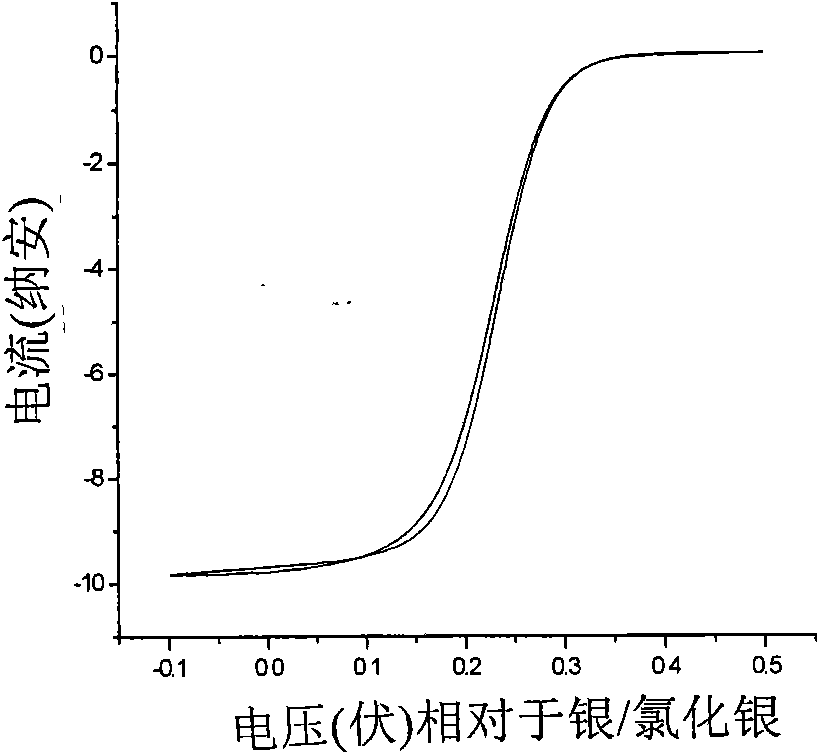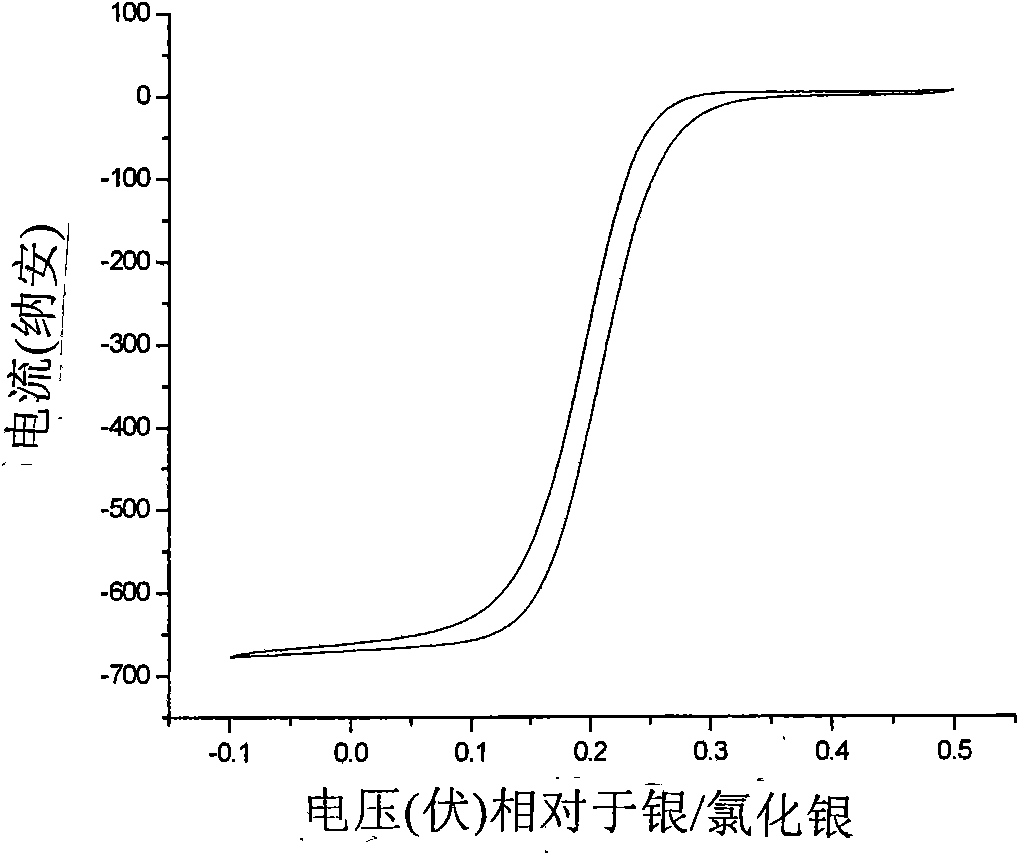Method of manufacturing an ultra-microelectrode
A technology of ultra-micro electrodes and manufacturing methods, which is applied in the field of scanning electrochemical microscope probes, which can solve problems such as reduced sensitivity, broken electrode wires, and inaccurate measurement results, so as to broaden the application field, improve resolution, and improve sensitivity Effect
- Summary
- Abstract
- Description
- Claims
- Application Information
AI Technical Summary
Problems solved by technology
Method used
Image
Examples
Embodiment Construction
[0029] Take the platinum microelectrode as an example: first, draw a clean glass capillary 1 with an inner diameter of 1 mm, and draw one end of it with a microtube drawing instrument (Chengdu Instrument Factory, WD-1, Chengdu) under a heating index of 750 degrees. into a tip with an inner diameter of approximately 80 µm. Then, the platinum wire with a diameter of 25 μm and the copper wire 5 with a diameter of 0.5 mm after cleaning with acetone and secondary water were bonded together with silver powder conductive adhesive, and placed in an oven at 150° C. for 0.5 h. Then it is solidified into platinum and copper wires, and one end of the platinum wire is inserted into the pointed capillary, and the platinum wire is exposed to the tip of the capillary by 1 cm. Place the tip of the capillary containing platinum wire at the outer flame of an alcohol lamp and burn for 0.3 seconds. Repeated 3 times, the capillary tip melted and the platinum wire was sealed in it. The other end o...
PUM
| Property | Measurement | Unit |
|---|---|---|
| diameter | aaaaa | aaaaa |
| diameter | aaaaa | aaaaa |
Abstract
Description
Claims
Application Information
 Login to View More
Login to View More - R&D
- Intellectual Property
- Life Sciences
- Materials
- Tech Scout
- Unparalleled Data Quality
- Higher Quality Content
- 60% Fewer Hallucinations
Browse by: Latest US Patents, China's latest patents, Technical Efficacy Thesaurus, Application Domain, Technology Topic, Popular Technical Reports.
© 2025 PatSnap. All rights reserved.Legal|Privacy policy|Modern Slavery Act Transparency Statement|Sitemap|About US| Contact US: help@patsnap.com



